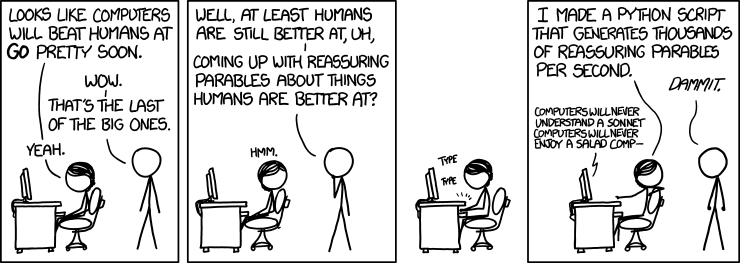We now rely on algorithms to tell us what movies to watch, what cat food to buy, and we’re even starting to let them drive our cars. That said, there’s still something a little odd about an algorithm picking out a dress for your date on Saturday night or the perfect tie for your best friend’s wedding. The simple fact is that computers can do a lot these days, but while their capabilities continue to develop there are still many things that humans do better.
Human Computation is a new field that’s based on this realization, and researchers within it typically work to harness the strengths of both “systems” by combining them to produce an overall better algorithm. The work in this domain combines traditional machine learning techniques with crowdsourcing, human computer interaction, and cognitive science to invent innovative ways to mesh the two.
Human Computation is at the core of our business. Our machine algorithms select items that a client might want, then passes them to a human stylist who selects five of those items to send to that client. It’s true that modern recommendation systems are capable of selecting items all on their own and, in fact, so are humans. We choose this workflow because it allows us to optimize our overall algorithm by making use of what both “systems” are naturally good at. Computers are great at crunching numbers and finding patterns, but often struggle with tasks that require an understanding of aesthetics and emotion.
At Stitch Fix, computers calculate purchase probabilities for every item in our warehouses, while humans write meaningful notes to clients and take personal requests into consideration. Both tasks are central to our business: We have large warehouses with tons of SKUs, and it would be impossible for a human-only workforce to consider every item for every client within a reasonable amount of time, yet our clients want a human connection. They want someone to read their notes, and to understand how important it is to have the perfect dress for a special occasion (one that’s not too similar to what they already have, but similar enough to match their personal style). By combining computers and humans, we get the best of both worlds, and the sum of both “systems” is greater than either on its own. You can think of this humans-in-the-loop algorithm as
\[\Large{h + m + hm}\]where \(h\) is the human contribution, \(m\) is the machine contribution, and \(hm\) is their interaction.
We’ve observed the relationship between human and computer to be synergistic, creating an overall algorithm that can cater to our clients in a way that neither could on its own. The workflow isn’t “computers do math” and “humans do note writing” - it’s computers considering certain signals to make recommendations, humans considering others, and an overall client and stylist experience that emerges from the two interacting.
Human Computation, both at Stitch Fix and in general, is a sophisticated collaboration between human and machine. It recognizes the weaknesses of both, while capitalizing on the their different strengths, allowing us to give our customers a highly personal experience with the speed of computers and the touch a human. It’s how we combine art and science.

